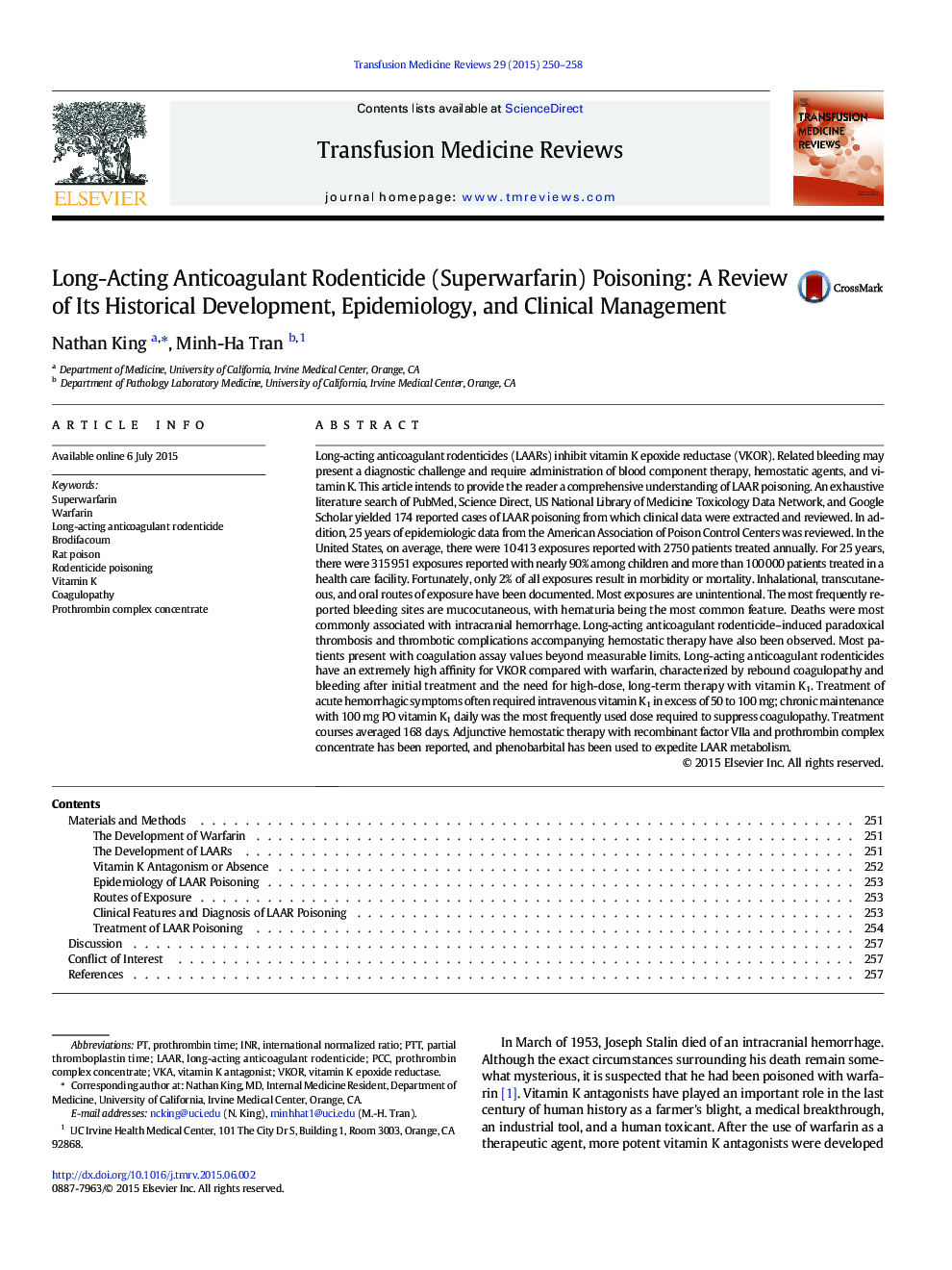| Article ID | Journal | Published Year | Pages | File Type |
|---|---|---|---|---|
| 3336489 | Transfusion Medicine Reviews | 2015 | 9 Pages |
•From 1987 to 2012, 315 951 human exposures to LAARs were reported.•Hemorrhagic symptoms often required IV vitamin K1 in excess of 50 to 100 mg.•Coagulopathy treatment courses ranged from 28 to 730 days with an average of 168 days.•Most commonly reported symptoms were hematuria, gingival bleeding, and epistaxis.•In adults, LAAR poisoning may be obscure when associated with surreptitious abuse.
Long-acting anticoagulant rodenticides (LAARs) inhibit vitamin K epoxide reductase (VKOR). Related bleeding may present a diagnostic challenge and require administration of blood component therapy, hemostatic agents, and vitamin K. This article intends to provide the reader a comprehensive understanding of LAAR poisoning. An exhaustive literature search of PubMed, Science Direct, US National Library of Medicine Toxicology Data Network, and Google Scholar yielded 174 reported cases of LAAR poisoning from which clinical data were extracted and reviewed. In addition, 25 years of epidemiologic data from the American Association of Poison Control Centers was reviewed. In the United States, on average, there were 10 413 exposures reported with 2750 patients treated annually. For 25 years, there were 315 951 exposures reported with nearly 90% among children and more than 100 000 patients treated in a health care facility. Fortunately, only 2% of all exposures result in morbidity or mortality. Inhalational, transcutaneous, and oral routes of exposure have been documented. Most exposures are unintentional. The most frequently reported bleeding sites are mucocutaneous, with hematuria being the most common feature. Deaths were most commonly associated with intracranial hemorrhage. Long-acting anticoagulant rodenticide–induced paradoxical thrombosis and thrombotic complications accompanying hemostatic therapy have also been observed. Most patients present with coagulation assay values beyond measurable limits. Long-acting anticoagulant rodenticides have an extremely high affinity for VKOR compared with warfarin, characterized by rebound coagulopathy and bleeding after initial treatment and the need for high-dose, long-term therapy with vitamin K1. Treatment of acute hemorrhagic symptoms often required intravenous vitamin K1 in excess of 50 to 100 mg; chronic maintenance with 100 mg PO vitamin K1 daily was the most frequently used dose required to suppress coagulopathy. Treatment courses averaged 168 days. Adjunctive hemostatic therapy with recombinant factor VIIa and prothrombin complex concentrate has been reported, and phenobarbital has been used to expedite LAAR metabolism.
